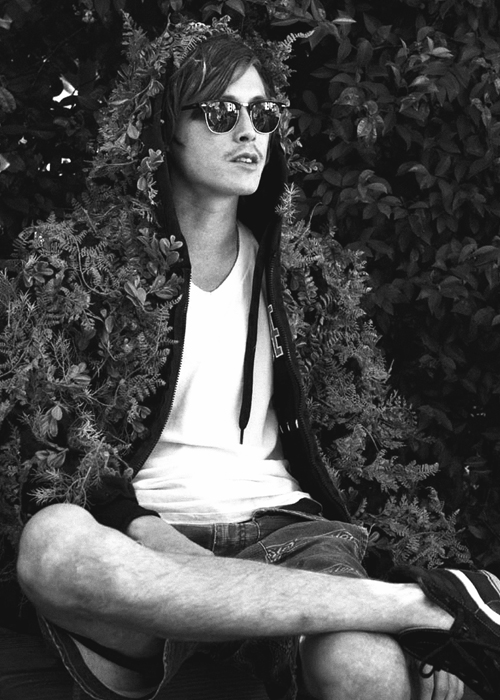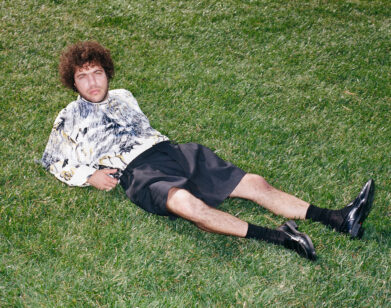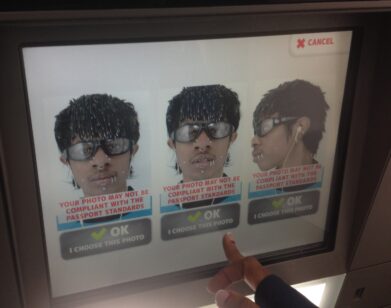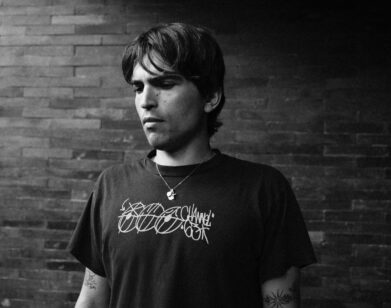Foster Care: Ace Norton

ACE NORTON. PHOTO COURTESY OF ALEX OLSON
Ace Norton began directing music videos and commercials at the ripe old age of 17. And growing up in Venice Beach, amidst street performers, punks, and musicians, has undeniably influenced his style—a combination of cheeky humor, fine craftsmanship, ironic violence, and sprinkles of stop-motion animation.
Norton’s résumé includes the best-known bands of the indie music scene: Does it Offend You, Yeah?, Death Cab for Cutie, The Sounds, and Bloc Party. Even when producing video content for mega-companies like T-Mobile (soundscapes of Berlin), Adidas (a food diner serving up fresh kicks) or Coca-Cola (a photocollaged journey through impossibilities), Ace has been able to incorporate his playful vision and push the boundaries of what can be commercial.
With the release of his second video for Foster the People’s “Call It What You Want,” Norton depicts the bandmates moving through subversive vignettes of boredom, violence, and the voids filled with money in a glitzy Malibu mansion. Norton is growing up, taking on bigger budget projects, and becoming a seasoned director while retaining his childlike humor.
VERA NEYKOV: How did you get involved with music videos? Has your involvement changed now that videos are almost exclusively into the Internet?
ACE NORTON: For better or worse, I’m part of the MTV generation, and of course, I watched a ton of movies and was inspired by all of these filmmakers. But the most creative and experimental venue to do film was essentially the music-video medium. You know you had these fantastic directors from the 1990s—people like Mark Romanek, Spike Jonze, Jonathan Glazer, Michel Gondry were really breaking the medium in bright, completely new ways. I respect people who take a different eye, do things differently and approach filmmaking from a non-traditional and less narrative, kooky way. That was the beginning of it.
NEYKOV: Was it also because you could make these “mini films” without having all of the components that it takes to make a feature film?
NORTON: Of course, you could do it with almost no budget. You don’t need a 120-page script, grip trucks, a ton of equipment. You make them with your friends, and if you had the right resources, and a great idea, people would see them.
NEYKOV: I remember the first music video of yours that I saw was for The Faint’s “Desperate Guys” (2004).
NORTON: I had literally made like 20-30 music videos before I got to do that one!
NEYKOV: But that was your first commissioned job?
NORTON: My first commissioned job, I think, was a Pattern 25 Records band where I made this music video for a 12-year-old girl band called Smoosh. I built an entire plasticine set inside my parents’ garage and did a claymation video, which took me two weeks to do.
But the way that I really got started was when I was in eighth grade and broke my tailbone. I could no longer do all of the physical stuff that I was doing before. I would go to school with an inflatable donut! At that same time, I found my dad’s 8mm camera in the closet. I made short movies every single day after school for two years. I would edit them on VHS “deck to deck” by myself, and they were a real solo production. They would star me; I would edit, write, and film them—everything! That was kind of my film school.
NEYKOV: Were there plots? Or were they just your ideas and things that you thought of through out the day?
NORTON: Yea, there was one was called “Teenage Hit Men” and there was one where I hired my dog to kill my dad… they were very dark and bloody, but cute at the same time.
NEYKOV: How did you start making music videos for bands?
NORTON: I went to USC, but dropped out my senior year, because I knew that this was what I wanted to do. I began by doing animation. I took an animation course the very last semester and after that, I just dropped out! It took a really long time, but looked really great and caught people’s attention. I would use my old school ID and sneak into the animation department at 4 am and use all of their equipment. I made five music videos that way. I would bring materials—construction paper, clay—from home, and just film.
NEYKOV: How have music videos changed? How has the way you make them become different? And also, not to say they are endangered, but they are probably harder to make, do you agree?
NORTON: I think it levels the playing ground. Before, it was really difficult to make a “legit” music video. You had to get the label’s approval, the commission, and it was harder for young kids to make videos for the music that they loved. Now, with the Internet, YouTube, blogs, anyone from anywhere in the world can make a music video. I think that’s great!
NEYKOV: It sounds like the Internet has helped you get in touch with musicians, and vice versa.
NORTON: Totally. Actually, half of my jobs came from MySpace or Facebook. I would see a band that I really liked, or musicians would see my work, and we would begin a dialogue that ended in a music video. We wrote each other messages, and that’s the way I got a lot of my jobs.
NEYKOV: What is the new video for Foster the People, “Call It What You Want,” about? It combines many strange vignettes.
NORTON: The video is about the void you create in our life when you have everything you want. How with success, people tend to fill that void with meaningless things. It’s about the creative extremes we go to when time passes by us at light speed; how boredom gets our minds racing into beautiful tangents. It’s about the surrealism of the mundane.
FOR MORE ON ACE NORTON AND HIS WORK, VISIT NORTON’S WEBSITE.






